Meet
Anna Fridell Staff Reporter
ASCWU President-elect Malik Cantú said he is looking forward to being a resource for students with a strong leadership team alongside him going into the 2023-2024 academic year.
“I am so incredibly excited to be working with this team,” Cantú said. “I think that there’s a really good range of experience with ASCWU itself. I think all of us are really passionate leaders.”
ASCWU is working to continue the development of the Center for Cultural Innovation (CCI) and aims to promote and uplift diverse culture on campus, according to Cantú.

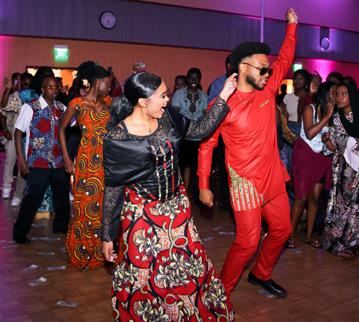
“[CCI] is to serve diversity on campus, because we are one of the most diverse campuses in Washington...” Cantú said.
$8 million have been provided by the state legislature for academic seats in the new CCI building, according to Cantú.
“We recently went to lobby at the Capitol and we actually asked the legislature for $6 million and they ended up giving us $8 million, so that’s wonderful,” Cantú said. “We still have a lot more funding that we need to secure but that $8 million just for academic seats in the building is going to be a huge help,” Cantú said.
Senate Speaker-elect Charles Johnson described Cantú’s leadership style as inclusive and collaborative.
“Malik does a very good job of making sure that all the people he’s working with feel heard and understood and welcomed in the spaces that they’re sharing,” Johnson said.
ASCWU hopes to continue to be a resource for students and a means of communication between students and administration, according to Cantú.
“Students deserve to be heard on this campus,” Johnson said. “I plan to stick with that and just make sure that students are being put on the forefront of decisions being made on campus.”
Having a strong representation of diversity will benefit the incoming ASCWU board through shared perspectives, according to Cantú.
“People of color have unique [and] particular experiences walking through life,” Cantú said. “Having those shared experiences, every board member is going to be really crucial to having a really strong team and cohesive unit.
Elected Director of Facilities Gerardo Castillo said it is exciting to see diversity among the team with Hispanic/Latino representation on the board for next year.
“I think we are all on the same page in terms of wanting to make genuine connections and help out,” Castillo said. “The most exciting thing I’m looking forward to is bringing a little bit of life back to campus after being dismantled a little bit after the pandemic.”
The team is looking forward to combining their skill sets and being a voice for the student body, according to Cantú.
“We all have very similar goals, the biggest one being the CCI,” Cantú said. “I’m just super excited to blend all of our experiences together and all of their passion and work together.”
Budgeting
Beau Sansom Staff Reporter
The Faculty Senate hosted a budget presentation to assess the financial state of CWU and solicit input on systemic solutions on May 10. Chief Financial Officer Joel Klucking led the presentation and reported that CWU is experiencing a budget deficit due to a 20% drop in enrollment.
“The goal of [the] meeting was to talk about the current budget situation,” Klucking said. “Right now, we are projecting a budget deficit and are trying to approach it in a different way, treating it like an adaptive challenge, which doesn’t lend itself to a top-down approach. We have to have solutions coming from the community to help us solve our problem.”
According to Klucking, this was the fourth in a series of presentations he has delivered to various CWU committees, including the President’s Budget Advisory Committee, the Executive Leadership Team, the United Faculty of Central Bargaining Team, the University Administrative Leadership Team and the Faculty Senate Budget Planning Committee. The presentation placed an emphasis on the decline in enrollment at CWU.
“We’re getting ideas from the community,” Klucking said. “I think that’s the most important part, that people understand what the current real situation is…this isn’t just an enrollment blip, this isn’t going to change next year, it’s going to take a long time to grow out of this.”
Klucking said he wanted to make it clear that past “transactional” solutions to the budget issue were not effective in the long term. According to Klucking, the root of the problem is that CWU’s ratio of students to faculty is swinging in the direction of having too many staff compared to the number of students.
According to Klucking, transactional solutions such as this year’s approach of trying to quell a $5.5 million budget deficit through cutting positions, salary and benefits will not be effective long-term. CWU is overstaffed for the level of student enrollment the university has fallen to.
“The key is that we have to adjust the operations of [CWU] to whatever level of enrollment that we have,” Klucking said. “If we can control ourselves and not overhire either faculty or non-faculty, then that means we might have some money to make some in-
vestments that will help promote the university and make us a better place.”
According to Klucking, the drop in enrollment is a problem, yet CWU shouldn’t necessarily hit a bad point, so long as they shift their approach to adapt with the changes as they come rather than continuing to operate in the current manner.
“I don’t think that there is a bad point, necessarily,” Klucking said. “The key is that we have to adjust the operations of the university to whatever level that we have. If we grow enrollment, great…if enrollment shrinks, that’s fine too, we just have to make sure we adjust as the university shrinks.”
According to Klucking, one approach to tackling the budget issue is to redeploy current staff to fill in vacant positions they are able to take on rather than hire an entirely new faculty member.
“[We’re] thinking about the cyclic nature of work,” Klucking said. “[We’re] thinking institutionally about that instead of just [going] ‘that’s my person so I’m going to let someone be less busy during one period’, when [we] could redeploy them elsewhere.”
According to Klucking, suggestions have been made to re-evaluate the work that needs to be done to tackle the problem on a systematic and institutional level.
“I think it’s going to be good for everybody if we can think of ourselves as an organism,” Klucking said. “All parts of the organism need to thrive for us to thrive, and I think that if we do that, we will be much better at serving our students and that is what we’re here for.”
According to Klucking, CWU is still getting its fair share of Washington high school graduates who attend public universities. The issue of declining enrollment in Washington is a problem on a state-wide level, according to Klucking, not just a problem facing CWU. To combat this, focus is beginning to shift toward bringing in more out-of-state students to CWU.
“The name of the game with enrollment starts with building a brand,” Klucking said. “We are doing a lot of outreach, it has been our emphasis really since 2016. We have invested considerably in our marketing and our enrollment management campaigns.”
College enrollment has been declining across all of Washington according to MyNorthwest. com and the Seattle Times. The Tri-Cities area Journal of Business indicates a 12% enrollment decline from fall 2019 to 2021 at EWU, while Western Front Online identified
1,000
CWU archivists and students search Washington land deeds for racial covenants
The Ellensburg Archive Center holds over 26,000 cubic feet of documents in their storage, and a group of researchers has taken it upon themselves to sift through them with a goal in mind.

Assistant history professor Dr. Josué Estrada and a group of students have joined an effort to dig through Washington archives to find land and property deeds to determine how many Washington properties still have active racial covenants.
Estrada said these racial covenants are essentially wording in the deed of a property or home that states it cannot be sold to someone who isn’t caucasian or white.
The search began when the University of Washington (UW) joined the Mapping American Social Movements Project. The program started in September 2022 by looking specifically at racial covenants in Seattle. According to Estrada, a researcher in Spokane started to look for racial covenants, but ran into an issue when they learned the covenants in Spokane were harder to remove because they were under the jurisdiction of the county and not the city. When the researcher brought the matter up to the state, the state asked if these issues were widespread.
Estrada reported that the state was concerned to hear about this.
“The state came back and said, ‘are these widespread throughout Washington state?’ And folks started to say, ‘yes, I think they are widespread,’” Estrada said. Bipartisan legislation was passed to rewrite the language of these covenants and UW and Eastern Washington University (EWU) came together to partner to identify these racial covenants. According to Estrada, UW is responsible for the western half of the state and EWU is looking at the counties east of the Rocky Mountains. EWU asked CWU to join and look at the counties in eastern Washington, because the state archives are in Ellensburg.
Estrada said it’s likely that a homeowner won’t even know about the racial covenants their home could have.
“Today, if you look at some of these communities that had these racial restrictive covenants, their property values are extremely high, very, very high, and who got blocked out of those communities,” Estrada said. “It’s persons of color.”
On May 8, Gov. Inslee signed legislation that states if a family or descendants of a family were affected by a racial restrictive covenant, they’ll qualify for a downpayment assistance program that will help these families purchase a home today.
“The work that these students are doing is incredibly important. There could have been a home potentially in Benton County, where a family was not able to purchase a home ... If those families demonstrate, [they] tried to purchase a home [and] were blocked, that family is going to potentially be able to access this down payment assistance program. To finally be able to purchase a home in the neighborhood that they desire and want.”

Vol. 125 NO. 7 May 17, 2023 DIVERSITY EQuAL, Q*Fam and Kittitas Pride kick off Pride month celebrations
NEWS ASA highlights African weddings for annual African Night Pg.
OPINION Ellensburg history is crawling with intriguing and scary stories
Pg. 3
5
Pg. 8
Morgana Carroll News Editor
a decline of over
students at WWU since 2019.
your new ASCWU
president: Malik Cantú
advises against bringing on more staff Breaking the Stigma: Eating Disorders See Story on Pg. 7
for the future: CWU budget impacted by 20% drop in enrollment CFO
Pictured above: Gillian Madden; Photo by Yohanes Goodell; Design by Brandon Davis
CWU alumni Samuel Fukuyama, a 30-year-old living in Pasco, Washington, was arrested for allegedly driving 10 hours to Utah on May 5 with “the sole intent to sexually assault a 5-year-old child” after an undercover officer baited him online, according to ABC4 Utah. Fukuyama was charged with two first-degree counts of attempted rape of a child and is being held without bail.
A Wildland Fire Season Flying Rehearsal is set to have multiple fire agencies practice flying in conditions that will be seen during wildfires.
According to NBC Right Now, the practice will take place near the Naneum Ridge State Forest, about 15 miles north of Ellensburg, from noon to 5 p.m.
Mail theft is roaming in Western Washington spiking the mail deliveries from the United States Postal Service (USPS). According to KOMO News, the United States Postal Service (USPS) said a halt of mail deliveries in Southeast Seattle is indictive of a worrying spike of mail theft cases across Seattle, as well as across the United States.
As soon as Zelda: Tears of the Kingdom was released on May 12 at midnight, fans were quick to get to work on speedrunning the game in its entirety. According to Polygon, a YouTuber named gymnast86 was the first to beat it, in a record time of 1 hour, 34 minutes and 33 seconds.
A mother osprey protects her eggs from a relentless hailstorm, according to HuffPost. A live camera in Longmount, Colorado focused on an osprey nest captured video of the mother bird covering her eggs and protecting them from the pea-sized hail falling from the sky during the storm. Both the female osprey, her mate and their eggs are safe.
Kayla Unbehaun, who was abducted by her mother when she was nine, was found on Saturday. According to CNN, Unbehaun is now 15 and was recognized after her appearance on Netflix’s “Unsolved Mysteries”
Bobi, a purebred Rafeiro do Alentejo living in Portugal, became the oldest dog in the world after turning 31-years-old. According to CBS, Leonel Costa, Bobi’s owner, and the rest of he and Bobi’s family celebrated his birthday with over 100 visitors from all over the world, including Guinness World Records, at his home in the village of Conqueiros.
A recent discovery found around 62 potentially new moons around Saturn, which would break Jupiter’s record of most moons. According to NY Times, the International Astronomical Union totals Saturn to have around 145 moons with 62 newly discovered ones, while Jupiter has 95 total so far.
Previously hidden in a private collection, two Rembrandt portraits have been uncovered in immaculate condition. According to CNN, the paintings depict the elderly couple Jan Willemsz van der Pluym and his wife Jaapgen Carels. The portraits measure nearly eight inches in height and are signed and dated from the year 1635.
Metaphysical crisis: Buddhism and A.I.
 Jampa Dorje Guest Columnist
Jampa Dorje Guest Columnist
A revolution is happening that is changing the way we understand the world. Data scientists Tristan Harris and Asa Raskin, co-founders of the Center for Humane Technology and the driving force behind Netflix’s The Social Dilemma, claim that “50% of all A.I. researchers believe that there is a 10% or greater possibility that humans go extinct from our inability to control AI.” The actual cause of our demise is a threat not from the outside but from the inside.
When an event is of serious purport, journalists sometimes use the term “existential crisis” as a rhetorical flourish to emphasize the importance of the event to our very existence. However, the rapid development of Artificial Intelligence is of such a magnitude and of such far reaching consequences a hyperbolic word like “metaphysical” is necessary. And metaphysical is an accurate term to use because it designates what is behind the paradigm shift now underway in our consciousness. We are on the cusp of a brave, new consciousness.
Buddhist philosopher Peter Hershock insists we are moving from the data gathering era of computers to the “attention economy” era. Big Data technology can now identify us as individuals and through advertising exploit us economically, what Hershock refers to the “colonization of our mental faculties,” produc-

Lead Editor Katherine
Camarata
Online Editor Madison VanRavenhorst
Faculty Adviser
Jennifer Green
ing a metaphysical revolution that will increasing threaten our freedom to think and act. We are being drawn into a terrifying world by a technology that uses synthetic intelligence to shape our behavior. We are inundated by fake news; we are seduced by the sexualization of commodities; our attention spans become shorter as we web surf; our mood more pathological as we doomscroll. AI has metaphysical ramifications because it is in the process of shaping human intelligence. Can Buddha’s teachings guide us on this exciting but perilous journey?
Gautama Buddha probably lived in the 5th c. BCE and would have been born into the Hindu religion. The Vedas are a large body of religious texts written in ancient Sanskrit between 1400 and 1200 BCE. This was the Big Data of Buddha’s time, and through these teachings his society was held together in a deterministic social order called the caste system. After his enlightenment, Buddha created a path, known as The Four Noble Truths, that freed us from the unnecessary suffering induced by attachment to a phenomenal world of impermanence.
Non-attachment and right-intention.
If I ask myself what my intention is for using technological devices, I can better discipline myself in the use of them. If I am using them only for pleasure, I am more vulnerable to being controlled. The Buddha would advise me to use technology constructively for the benefit of myself and others. This means recognizing
that the constant stream of advertisements and demands for my attention is not something I need to react to. When I realize that suffering arises from attachment to impermanent things, I can focus on what is important for me to accomplish and avoid unnecessary stimulation.
The practice of mindfulness is central to Buddhism and involves being fully present and aware of one’s thoughts, feelings and surroundings. By developing this meditational skill, I can be conscious of how technology affects my mind. I can learn to recognize when I am being pulled into the attention economy and make a conscious decision to step back from it.
Artificial Intelligence has been proclaimed to be revolutionary and world-changing, but it is not without risks. Governments, businesses, individuals, as well as machines will have a say in how it is to be applied and how the risks are computed. Buddhist teachings can have an influence on these deliberations.
*SeeFullStoryOnline*
Tuttle
Page 02
@CWUObserver CWU Observer @CWUObserver cwuobserver@gmail.com cwuobserver.com
Local National Global Beyond Our Coverage
Editorial Policy: The Observer is a public forum for student expression, in which student editors make policy and content decisions. The mission of The Observer is two-fold: to serve Central Washington University as a newspaper and to provide training for students who are seeking a career in journalism. The Observer seeks to provide complete, accurate, dependable information to the campus and community; to provide a public forum for the free debate of issues, ideas and problems facing the community at large; and to be the best source of information, education and entertainment news. As a training program, The Observer is the practical application of the theories and principles of journalism. It teaches students to analyze and communicate information that is vital to the decision making of the community at large. It provides a forum for students to learn the ethics, values and skills needed to succeed in their chosen career. If you have questions or concerns, email us at cwuobserver@gmail.com.
May 17, 2023 Assistant Online Editor Deacon
How does A.I intersect with Buddhism?
Photo courtesy of Pexels. Photo design by Brandon Davis
EQuAL, Q*Fam and Kittitas Pride kick off Pride celebrations
Beau Sansom Staff Reporter
“Pride means a bunch of different things to a bunch of different people,” Equality through Queers and Allies (EQuAl) Vice President Jessica Berkey (she/he) said. “Pride to me is being happy with who I am and celebrating my expression of myself in the way that I am free to do that, and celebrating all the pain and work that the people who came before me put in so I could be myself.”
EQuAl and Kittitas Pride are preparing for Pride week, which is from May 29 to June 2 on CWU’s campus and the first annual Pride parade in Ellensburg history respectively, according to Kittitas Pride Board President Keelin Pattillo (she/ they) and eventbrite.

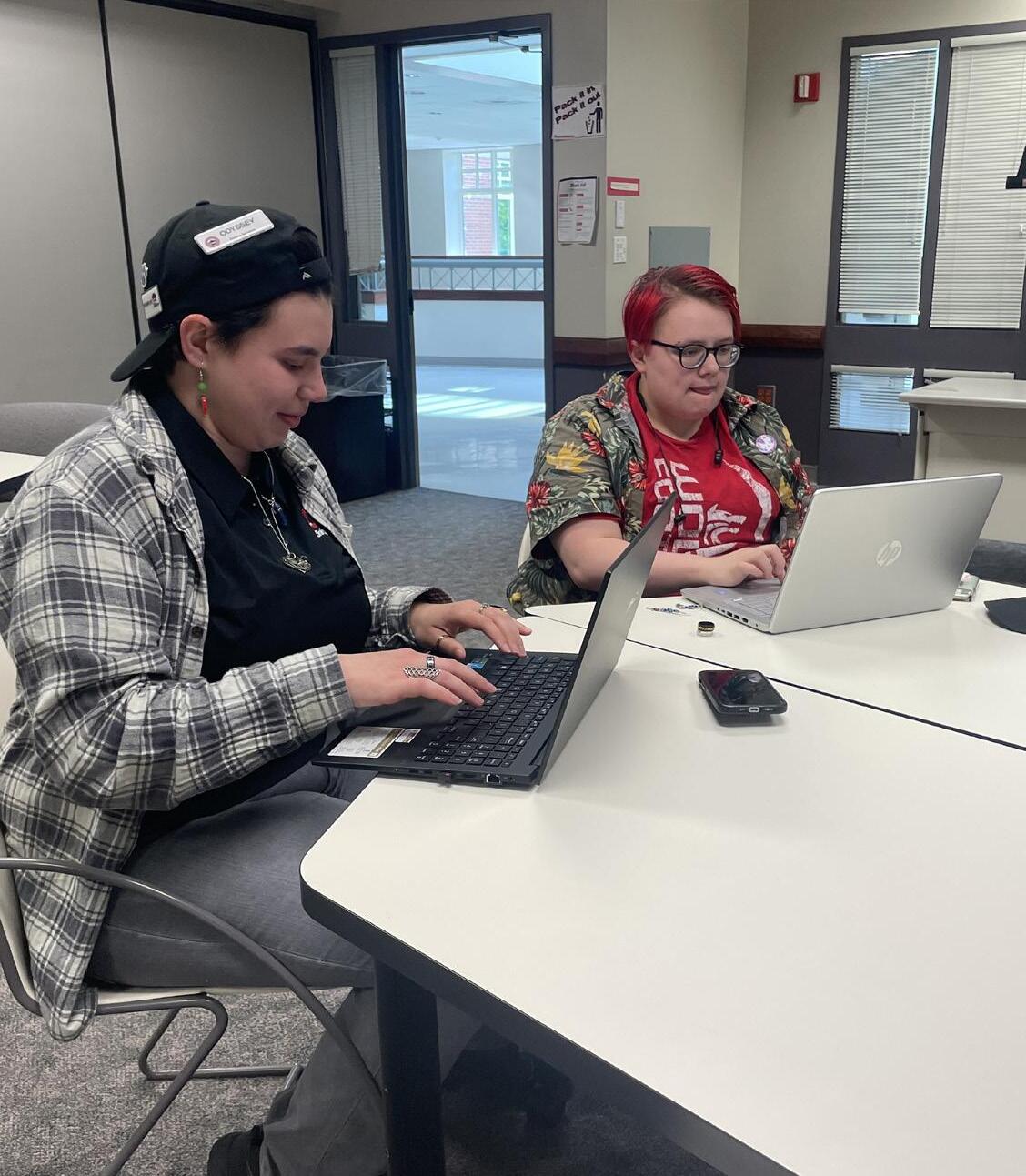
“I think [Kittitas Pride Parade] is really amazing,” Berkey said. “I think it’s good for queer people in Ellensburg to be able to have that sort of event go on… it’s not the hugest town, but it’s good to have events like that where you can really feel surrounded by a bunch of people who are like you.”
According to eventbrite and Pattillo, the parade will begin at CWU Lind Hall at 11 a.m. on June 3 and make its way through the downtown area before ending at 1 p.m.

Before the parade, CWU and Q*Fam (a support group for LGBTQ+ students) will be hosting various Pride related events in May, including:
Operating a table on the SURC West Patio for the International Day Against Ho -
mophobia, Biphobia and Transphobia on May 17 from 11 a.m.-12:30 p.m.
Harvey Milk Day in the SURC corridor where students can visit the Q*Fam table to learn about California’s first openly gay public official while enjoying milk and cookies on May 22 from 5-6:30 p.m.
Pansexual/Panromantic Visibility Day, where students can visit Black Hall 101 to discuss topics on pansexual and panromantic identity with free lunch on May 24 from 11 a.m.12:30 p.m.
EQuAL will also be hosting an amateur drag show on the SURC center patio west on May 29. Enjoy the free show from 1-2 p.m. followed by a professional drag show in the SURC Ballroom at 8:00 p.m.
EQuAL will host decoration making for the CWU student float that will be in the parade on May 30 and June 1 from 10:00 a.m. - 2:00 p.m.
Lavender Graduation will take place at Sue Lombard Hall June 2 from 6:00 - 8:00 p.m.. Lavender Graduation is a closed event, but there will be an afterparty immediately after open to all.

“We really want to get CWU involved,” Pattillo said. “[We] really want to capture the student body and get [them] involved because they are such a huge part of this community… we’ve got some different folks signed up to be part of the parade, but we’re really hoping the student body can show up and be spectators and cheer us on.”
According to Berkey, she had a positive experience at past events held at CWU, noting how he typically kept to herself and that she was able to make friends at these events.
“At the beginning of the year, I was going out to a lot of events and meeting new people, there were a lot of people at the drag show…that made me happy, not everyone there could have been queer but they still found value and excitement in it,” Berkey said. While progress has been made over the years, Berkey said that there is still work to be done. According to Berkey, the queer community on campus can be considered to be somewhat isolated.
“A lot of the queer community here is sort of in a bubble,” Berkey said. “Having spaces for queer people is important, but if we want it to be more of an overall thing instead of incredibly building these bubbles, we need to branch out more and make spaces for queer and [cis -
gendered heterosexual] people to interact with each other and be supported by each other.”
A specific area of improvement called out by Berkey was in regard to the CWU commencement website not having an option to change which name would be read for graduates.
(See “Transgender students face uncertainty over whether preferred names will be allowed for commencement” )
“We need to call out bad things when we see it,” Berkey said. “Like on the commencement website where you couldn’t change your name from your birth name, which for some people is their deadname [the name an individual used prior to transitioning that they no longer go by]…that’s pretty messed up, you don’t want someone reading your dead-name out-loud during graduation.”
Pattillo also said they would love to see further progress to be made in the community through increased support from the community and expansion of queer and SOGI (Sexual Orientation and Gender Identity) owned and operated businesses in the valley. Patillo said they advocate for businesses, individuals and city government to get involved and support the LGBTQ+ community outside of Pride month.
“One of the trains of thought is that there is a Pride bandwagon to jump on,” Pattillo said. “While that is all well and good, we really do want the support outside of June.”
THEDIVERSITYPAGE
Supportingawareness Page 03 May 17, 2023 @CWUObserver CWU Observer @CWUObserver cwuobserver@gmail.com cwuobserver.com
Sharingperspectives
EQuALmeettodiscussoperationsandPrideplanning. Photo by Beau Sansom
EQuALmemberscreatepresentationsasameetingicebreaker.
International Day Against Homophobia, Biphobia, and Transphobia May 17 @ 11:00 a.m. - 12:30 p.m. Find Your People: Pansexual and Panromantic Visibility Day May 24 @ 11:00 a.m. - 12:30 p.m. Harvey Milk Day May 22 @ 5:00 p.m. - 6:30 p.m.
Photo by Beau Sansom
Central theatre ensemble’s “Into the Woods” signifies the importance of community
 Zileni Milupi Assistant Scene Editor
Zileni Milupi Assistant Scene Editor

James Lapine and Stephen Sondheim’s popular adaptation of the classic Grim Brothers fairy tales and two-time Tony Award-winning musical, “Into the Woods,” finally took the CWU stage on May 12 after being postponed due to COVID-19. Produced by the theatre department in collaboration with the music department, the production’s first show was in McConnell Hall and will run for a total of seven shows in spring quarter on May 12 and 13 and May 18 to 21.
According to Associate Professor in Theatre Arts and director of the show Dr. Emily Rollie, one of the themes of the plays this season was “old stories made anew.” Rollie further explained this quarter was great timing for “Into the Woods” which is a combination and adaptation of stories.
“I think the play is about, at its core, the way that our actions impact other people’s actions,” Rollie said. “And the way that we have to come together as a community to get our wish.”
According to Rollie, the importance of community in the play and how we can apply that to society post-pandemic.
“As we’re trying to reinvent what life is now with the legacy and the memories of COVID and loss, how do we come back together as a community,” Rollie said. “I think what we did discover in that time was how important it is to look out for the greater good of people… So I think right now, this particular story is important.”
Theatre and music departments collaborate with live orchestra
With so many iterations of the musical, Rollie explained that it’s possible to discover something new with each cast.
“I think the way that a lot of the actors have come to their characters, they’re offering things that might not be the not the same as other iterations,” Rollie said.
“But I think what the actors have done so well is to think about how their embod-
iment of the character stems from their creative process.”
In interviews with The Observer, members of the cast discussed their interpretations of their characters and how they mentally prepared for their respective roles.
Theatre performance senior Marcus Wolf plays the lead role of the Baker. In the play, a witch casts a spell on the Baker and his wife that prevents them from having a child.
Wolf explained that he tapped into attributes of his own father to play the baker. He further explained that he looks up to his father and aspires to be him, in the same way, the baker aspires to be a father.
According to Wolf, the Baker is a flawed character who learns from his mistakes and in that way, can be relatable to the audience.
“Something that I would love people to know is just learning how to make mistakes and learning from them,” Wolf said. “I think what we need to do as people is learn how to fail and learn how to pick yourself up from it.”
Musical theatre junior Yuka Kawai said she had to acknowledge that her character Cinderella isn’t a princess, even though she is generally considered one.
“She [Cinderella] is a girl who just wants to party, especially in the iteration of ‘Into the Woods,’” Kawai said. “She’s just a girl who wants to do something new and experience something new.”
Kawai stated that she received direction from Rollie to play her character in a grounded way. Kawai elaborated that this meant not speaking in a “floaty” voice that is normally associated with princesses.
Kawai further explained that switching between registers for Cinderella’s speaking voice and her singing voice was a bit of a challenge, despite all of Cinderella’s songs being well within Kawai’s range.
Kawai and Rollie both shared similar thoughts on the metaphorical aspect of ‘the woods.’ Rollie explained that ‘the woods’ is a place of possibility.

“It’s also a place that within possibility, there’s a little bit of darkness and danger, but that allows us to grow,” Rollie said. “So, thinking about those moments in the woods as moments of opportunities for learning, but then how do we take that back into our community?”
Kawai said one lesson she would like audiences to take away from the musical is to love their community and trust the people in it.
“There are times when you have to go through hardships,” Kawai said. “But there will be people who can support you and you won’t be going into the woods alone.”
Kawai also shared what she would want audiences to learn from her character.
“Go and try out that new thing that you’ve always wanted to do, but you were too afraid to do because it might steer you in a really surprising direction,” Kawai said. “It might be good, it might be bad, but it’s something you’ve tried.”
Musical theatre senior Annabelle Brasch who plays the witch, described her character as somewhat of a combination of Maleficent and the evil queen from Snow White.
“She is a mixture of these characters,” Brasch said. “Somehow you have to make her more complicated and more of a human being than those evil villains.”
Brasch said she drew bits of inspiration from Bernadette Peters and Meryl Streep, who played the witch in the original production and 2014 movie adaptation respectively.
Brasch explained that she has learned a lot through the challenges she faced in the role, as it is vocally demanding.
“I’ve never had the opportunity to do something in this realm yet,” Brasch said.
“So it’s very fun to be able to do it and realize that it’s challenging but I can do it.”
Audience perspectives
Audience members who attended the opening night expressed their satisfaction with the show.
“This is the first time I think I’ve seen a live orchestra in a show,” Second year computer science major Elijah Johnson said. “It definitely allows for better timing as opposed to tracks, and it sounded fantastic.”
Second-year art major Makenna Catron shared her thoughts on the cast.
“I think the cast is wonderful and amazing,” Catron said. “I think everyone was cast perfectly.”
May 17, 2023 Page 04 SCENE @CWUObserver CWU Observer @CWUObserver cwuobserver@gmail.com cwuobserver.com FIND YOUR PERFECT SUMMER JOB LOCATED AT THE LODGE AT SUNCADIA 3600 SUNCADIA TRAIL CLE ELUM, WA 98922 AT ONE OF OUR UPCOMING HIRING FAIRS 2PM–6PM 11AM–3PM 1PM–5PM MARCH 21, 2023 APRIL 27, 2023 MAY 19, 2023 QUESTIONS? EMAIL: sca-peopleservices@suncadia.com SCAN TO VISIT CAREERS WEBSITE ▶
Full Story Online
Thecastperformingtheopeningnumberduringthefinalrehearsal. Photo by Yohanes Goodell
ASA highlights African weddings for annual African Night

According to Miyar, African culture can be “demonetized,” or lose its value and not be understood, so the goal of African night is to have a way to express and fully showcase how beautiful their culture is. Miyar said the theme of the event makes people from the African continent proud of their culture.
“[We] usually don’t see our culture being expressed as much, even if you were born in America and you are someone from Africa, you usually don’t see your culture being as represented within the media,” Miyar said. “I feel like this gives them a form of representation on their school campus and to know that they [can] feel comfortable.”
“The event was amazing because it was a mix of different cultures and a mix of different countries,” Makuma said. “Learning of the culture’s work, learning to dance to the music, that was amazing. It was special because [there were] different ethnic songs that we played, and we’re able to perform different dances that we have back in Congo.”
Jeremy Mumba, who is a part of the Bemba culture in southern Zambia, said that this event showed individual cultures from Africa and how they all relate to one another.
Quincy Taylor Staff Reporter
African Night showcased cultural foods and dances to display what a traditional African wedding can look like in the SURC Ballroom on May 13. The event, staged like a big wedding, was put on by CWU ASA (African Student Association).
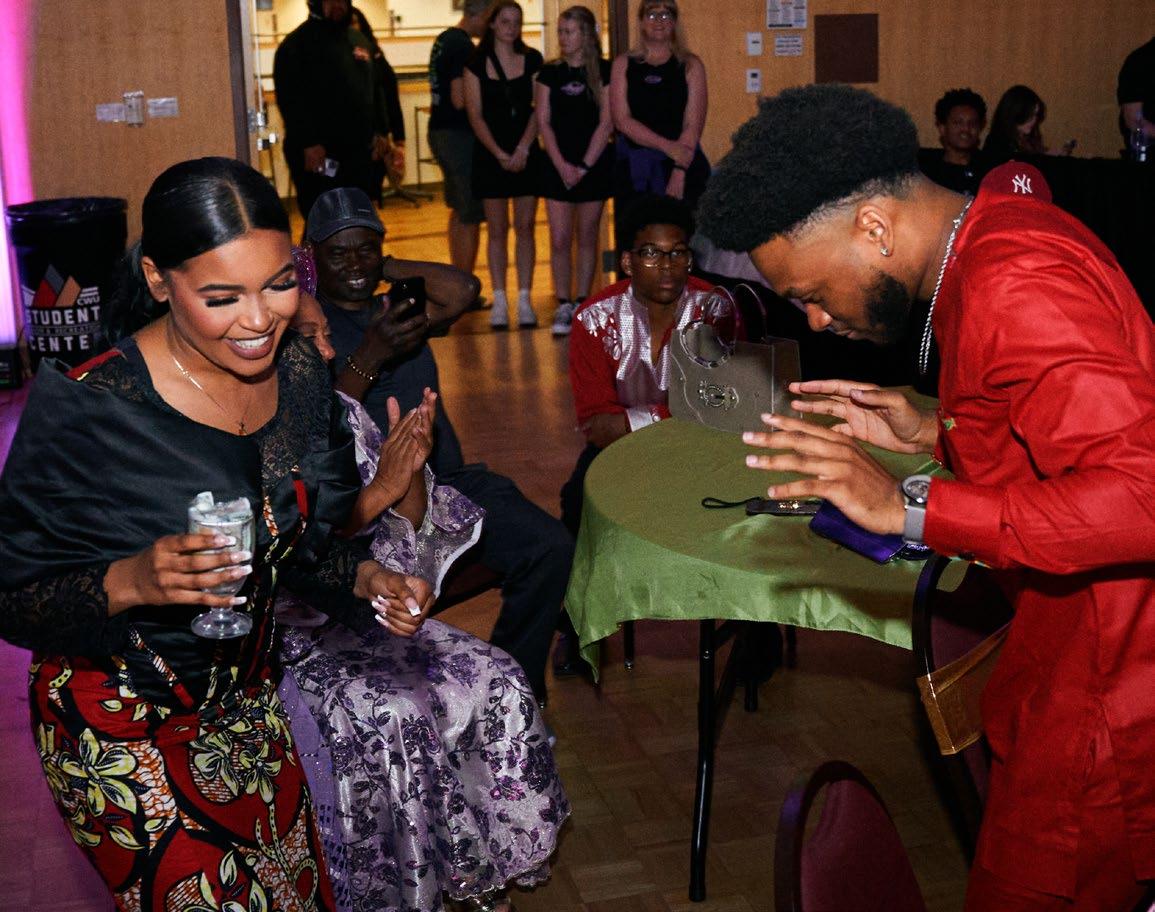
According to Atong Miyar, who is a junior business administration major, there were many countries represented at African Night including Nigeria, Central Africa,
Congo, Guinea, Zambia, South Sudan and many more.
Miyar is on the board for ASA and explained that this year’s African Night was more intensive than last year’s.
“For us, African night has always been an event for us to showcase [African culture] at its height,” Miyar said. “Last year, we [did] African night and we had titled it to be welcoming people into our culture. This year, we are doing a fake African wedding. We’re going deeper into African culture, wedding[s are] a huge part of our traditions.”
According to Miyar, in order for this event to happen, it usually takes a lot of planning, like making reservations for the SURC ballroom in order to have a venue.
“African Night planning takes months and months of planning, so we usually [begin] in fall quarter… it takes 5-6 months of planning,” Miyar said.
Anthony Makuma, who majors in aviation management, is from Congo and he explained how he enjoyed the event and that there was a lot to learn from the culture in other parts of Africa as well as his own culture.
“We’re all Africa,” Mumba said. “I think it’s a strong reflection of our culture. Africa is a very big continent, many countries, but we’re all, in a sense, one. We’re united by the fact that we’re all African. We’re proud to be African.”
Both Mumba and Makuma reflected on how African Night represented their countries and what it meant for them to see the togetherness that African people bring.
“[My family] might [leave] with something new in their mind[s] because it wasn’t only Congolese people represented, but it was people from different countries. Different countries, different dances, different music, it was a bigger representation,” Makuma said.
Barrio Fiesta
Mumba said that ASA has brought a sense of community to him.
“You know, we have our differences sometimes, but we love each other,” Mumba said. “We care for each other. We’re a community. The community part is what I appreciate the most from ASA.”
After the event had ended, Miyar said she felt that everyone gave their all into African Night and she was appreciative of everyone who had contributed to the work.
According to Miyar, the event showcased African culture in as many ways as possible, and it gave a great perspective on what African culture is all about.
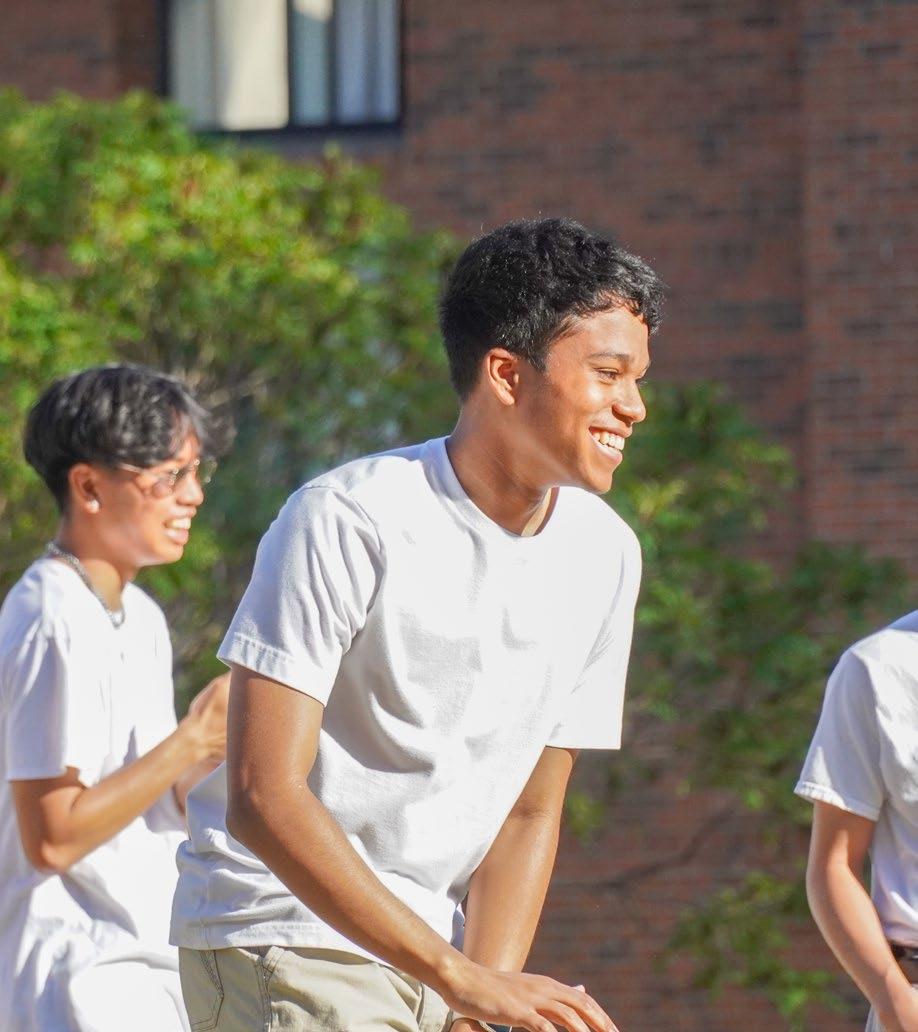
“When it comes to dances or when it comes to fashion, you can see the diversity within whatever country that was being presented at the moment. In that aspect, we did a pretty great job,” Miyar said.
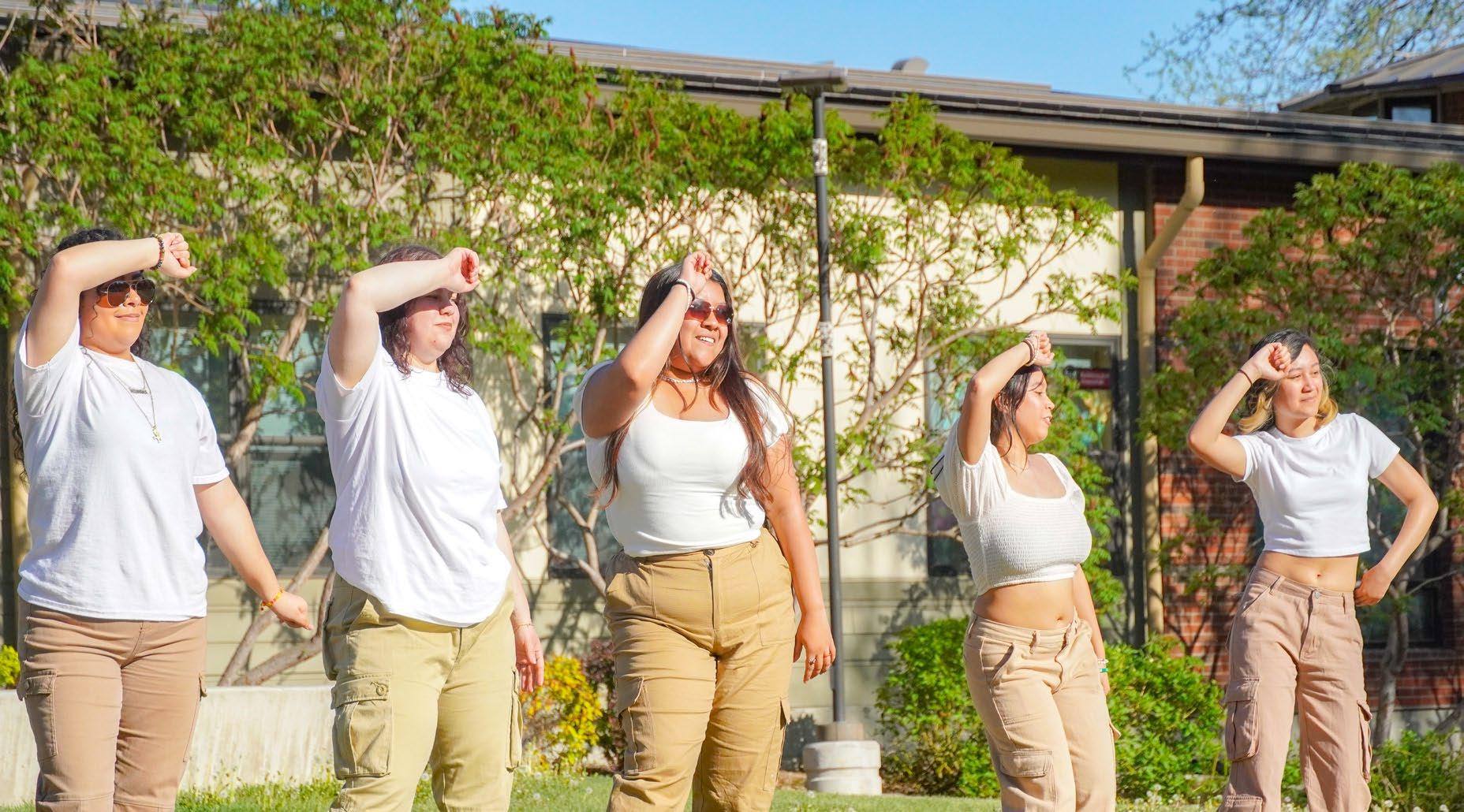
According to Miyar, who is South Sudanese, she described how much she loves the community of her culture and what it is like to be from South Sudan.
“I love the community…of my culture, [we] tend to take care of each other,” Miyar said.
Miyar had also stated that she is looking to expand the diversity of African culture representation at CWU and continue expressing those cultures at next year’s event.

@CWUObserver CWU Observer @CWUObserver cwuobserver@gmail.com cwuobserver.com
May 17, 2023 Page 05 SCENE
Two people dancing to music. Photo courtesy of Chris Kibari
Photos by Yohanes Goodell
Naseer Phelps (center), FASA Representative with Elijah Morales (left)
ASCWU representatives from left to right: Briana Silva, Luis Reyes, and Brady Smith
From left to right: Sandra Rojas, Liza Betancur, Yari Granados, Emma Cavin, Angela Eustaquio
Lance Laurea, CWU FASA President
Mental health training required for law enforcement
Megan Rogers
News Editor
The Ellensburg Police Department (EPD) has seen an increase in calls related to mental health issues from 2015-2022, according to the Daily Record.

According to the Daily Record, “In 2015, EPD reported 171 ‘mental health referrals.’ That grew to 245 in 2017 and 424 in 2020. After a slight drop to 408 in 2021, the number reached a new peak of 455 in 2022.”
The Washington State Criminal Justice Training Commission mandated that all law enforcement officers receive eight hours of Crisis Intervention Training (CIT) back in 2015, according to CWU’s Assistant Chief of Police Eric Twaites.
“[This] provides us with some resources and tools for us to deal with individuals experiencing any sort of emotional or mental health, physical [and] behavioral issues,” Twaites said. “To increase both not only our safety, but the safety of the individuals that are in crisis.”
According to Twaites, the initiative I940
took place in 2017, which requires all officers to take de-escalation and mental health training.
Beyond the base level of training, there is also a 40-hour CIT, according to Kittitas County Sheriff’s Department Inspector Christopher Whitsett.
“It’s a great training where they bring in experts, mental health professionals, who help deputies and officers to understand that we’re never going to be mental health professionals,” Whitsett said. “But we can learn strategies to try to avoid exacerbating a situation.”
Whitsett said the next level of training that can be an option for law enforcement officers to take is crisis negotiation or hostage negotiation.
“[It’s] based on the FBI hostage negotiation teams and experience,” Whitsett said. “It’s training, again, by experts and people who’ve been there and how to defuse some of the most dangerous and difficult crises that can happen.”
Whitsett said that the strategy behind de-escalation is making sure they are there
for the right reason and that they control the pace of the incident to the best possible extent. He said they want to be able to use these tools and strategies when appropriate.
“Sometimes a person in crisis or a criminal suspect does things that don’t permit you to use a lot of different strategies,” Whitsett said. “Our first job is to protect the safety of the public and sometimes, a person in crisis or a criminal suspect can do things that take choices out of your hands.”
EPD Sergeant Brett Koss said the tactics they use when it comes to de-esca-
lation are time, distances, shielding and communication.

“What that means is that we take our time, we literally will stand farther back,” Koss said. “It gives people their space, and it gives us our space and it gives us options if we need to run away, if we need to give commands, whatever that is.”
According to Koss, out of the 1,000 contacts they have every year, there have only been a handful of them where they had to use force because of the CIT.
CWUpolicecar. Photo courtesy of Samantha Cabeza
Breaking the Stigma: Eating Disorders
Katherine Camarata Lead Editor
Having an eating disorder may look like starving yourself or overeating, or it may be entirely invisible, occurring in the mind more than the body.
“You look in the mirror and all you see is somebody who is fat and not pretty and disgusting,” junior in graphic design Elise T. said. “So you decide to restrict your portion size, because you think being skinny will help you fit the norm. Being in control of your portion size feels good. You realize that you use food as a crutch to make yourself feel better, to make yourself feel whole and less anxious and less upset. So you eat and eat and eat, and then you just feel sick.”
In recognition of Mental Health Awareness Month in May, The Observer did a deep dive into eating disorders and found that 28.8 million or 9% of Americans will experience an eating disorder in their lifetime, according to the National Association of Anorexia Nervosa and Associated Disorders. 10,200 deaths per year happen as a result of eating disorders, making eating disorders the second most deadly mental illnesses behind opioid addiction, according to the National Association of Anorexia Nervosa and Associated Disorders.
Eating disorders include anorexia nervosa characterized by extreme food restriction, bulimia characterized by purging, binge eating disorder characterized by excessive overeating and body dysmorphia characterized by a distorted sense of one’s own body image among others, according to the Diagnostic and Statistical Manual-5.
CWU students shared their experiences living with eating disorders and Senior Lecturer and Dietitian Emily Shaw offered her professional perspective on the presence of eating disorders at CWU.
Second year art major Cloey Klingler said her eating disorder manifests in the form of not liking what she sees in the mirror and not allowing herself to eat.
“When I’m around people I don’t know very well, I have a tendency to just not eat,” Klingler said. “When I’m out in public, I usually will not eat. I will feel guilty about eating, no matter the amount or no matter the frequency of it. It’s something that I struggle with every day.”
Elise said she hopes more people realize the variety within eating disorder diagnoses.
“It’s not just bulimia,” Elise said. “It’s not just eating disorders where you want to be skinny … the ones where the body wastes away. I want people to know that there are more disorders out there that may take many forms and they should acknowledge all of them, especially in the media.”
Elise shared how she first realized she had a problem.
“When I was younger, I would skip a meal, which doesn’t really sound like an issue,” Elise said. “But I would do it all the time. I would binge when I went home. I fell into a binge-restriction pattern.”
Klingler said they believe their eating disorder stems from a fear of disappointing people, overthinking and from being critiqued by their family.
“I first started noticing it around fourth grade, because that was around when my family would start nitpicking me eating,” Klingler said.
“Over time, it got to the point where they weren’t just nitpicking what I was eating or how much, they would nitpick the way I looked, and then be like, ‘you should eat less, you should stop eating’ and things like that.”
Klingler said they have had some success working on their disorder through journaling. She emphasized the elements of her eating disorder that are less visible than others.
“I wish more people knew that it’s not just about eating more or eating less, it’s a lot more complicated than that,” Klingler said. “It’s not just, ‘oh, everything will be fixed if I just eat.’ In order to get yourself to that point to eat, there’s a lot of mental strain that goes in it. There’s a lot of physical strain that goes into it and a lot of people don’t understand. Telling people, ‘hey, just eat’ or ‘hey, just stop eating.’ It’s not okay and it doesn’t help.”
Klingler said when it comes to supporting those with eating disorders, it’s important to hold space in a non-judgmental way.
“If their friend is confiding in them, do it judgment free,” Klingler said. “I found that I’m a lot more comfortable with people if they’re willing to listen to me, as well as not judging me for what I eat or how much I eat. If I do need to eat, they offer to go and eat too.”
According to Shaw, treating eating disorders requires a “multifaceted” approach and she recommended combining the support she offers with mental health counseling.
“Eating disorders are technically mental health issues,” Shaw said. “I tend to work mostly with students starting to recognize connections between their emotions/thoughts and their food behaviors and working to separate them, addressing the root of the cause of the behaviors and working to redirect them. Oftentimes, students are shocked at how little we end up actually talking about food/nutrition, since most of the issues stem from what they are thinking about the food, not the food itself.”
Elise said she copes with her eating disorder by using positive self talk and reshaping her relationship to food.
“It’s mostly recognizing that I am enough,” Elise said. “Recognizing that I’m strong and able to deal with things. I’m currently trying to practice food and clothing neutrality. Overall, I think I’m in recovery, since it’s been a while [six months] since I’ve relapsed. I actually am in a nutrition class right now because
I wanted a different perspective on food. We see food as nourishment rather than food as something that’s good or bad.”
Elise recommended finding support from other people and being brave when seeking treatment.
Don’t be afraid, just don’t be afraid,” Elise said. “You are enough. Make sure to reach out to other people. I know that that’s often hard, the hardest part, but once you do, you’ll feel so much better.”
Klingler said support from her boyfriend helps her cope with her disorder, and similarly, Elise expressed how the people around her play a role in her health.
“I depend a lot on my friends for support and for feeling whole sometimes,” Elise said. “Depending on others for support is great, but one should not always depend on others. One should be able to depend on oneself. I’m working on building that myself. It’s like a house that’s partially finished, it’s come a long way.”
Elise recommended accompanying people with eating disorders out for a meal.
“Take them out to dinner, be around them,” Elise said. “I have this thing where if I want to eat something and I know I’m going to have an issue eating it, I share with another person immediately. I feel so much better because my brain goes, ‘oh that person is eating that, I can too.’”
According to Shaw, there is one simple question students can ask themselves to gauge whether they need support.
“If anyone is wondering if they should seek help, my best question to ask someone is ‘are you comfortable with your
food intake?’” Shaw said. “If your answer to that is no, then it’s never a bad idea to reach out for help or just to have a chat with me or a counselor.”
Services for students struggling with eating disorders are available through Nutrition Counseling in the Student Medical Building and through Student Counseling in Black Hall. Shaw additionally said she is an advocate for students to see primary care physicians through Student Medical Services on campus for additional treatment.
Resources:
Student Medical and Counseling Services: 509.963.1881
Wellness Center in SURC 256: 509.963.3213
National Eating Disorder Association: https://www.nationaleatingdisorders.org/
?
Ellensburg’s history is crawling with intriguing and scary stories
MJ Rivera Columnist
You already know Ellensburg is a small town and home to CWU, but do you know the history of the buildings you see around town? Inspired by the upcoming historic pub crawl, I wanted to share a few stories from Ellensburg’s past that you likely haven’t been told, including one about murder.
I had the privilege of interviewing the director of the Kittitas County Historical Museum, Sadie Thayer, and the owner of The Pearl Bar & Grill, Blake Collins, to put these stories from Ellensburg’s timeline together.
Where The Huntsman Tavern is now: A story of the Kleinberg brothers
The Huntsman Tavern is a restaurant and bar located downtown on Pearl street in the Kleinberg building.
The Kleinberg building is named after the Kleinberg brothers, who were merchants of textiles and hay, and part of one of the only two Jewish families in Ellensburg in the early 1900s, according to Thayer.

“They actually brought hay to the market in Seattle and all across the world,” Thayer said. “Around 1900-1910, they’re the ones who opened the Kittitas Valley hay industry to the world. They’re the ones that really put us on the scene and made the hay industry what it is today, or [they] helped to create that boom.”
According to Thayer, there was also a Jewish meeting hall on the third floor of what is now The Huntsman Tavern. The second floor was a hotel, and the main floor was the Kleinbergs’ clothing store. The building was also larger, but the second half of the building on the south side was destroyed in the fire of 1935.
“The second and third floors [were] essentially trapped in time until the more recent remodel that happened here just a few years ago, that then turned [them] into [an] apartment,” Thayer said.
A scary story placed where Pita Pit and Grocery Outlet stand today
Just two doors away from the Kleinberg building, where our Pita Pit resides today, was a bar that many Ellensburg residents were fond of in the late 1800s called the Teutonia Saloon.
The story goes that in 1895, a 55-yearold man named Samuel Vinson followed a man named John Buerglin into the Teutonia Saloon, demanding him to buy him a drink. Buerglin refused and Vinson stabbed him in the side with a knife, according to Thayer.
It was at this time that the owner of the bar, Michael Kohlhepp, tried to break up the fight with a club. Then, Vinson’s son, 29-year-old Charles Vinson, followed his father into the saloon with a revolver and shot Kohlhepp, who died later that night. The Vinson men were taken to the Ellensburg jail. Buer-
glin died from his stab wounds two days later, according to Thayer.
That night that Buerglin died, a mob of Ellensburg residents, angered by the deaths of their friends from Teutonia Saloon, decided to break into the jail to bring the father and son to justice.
Perhaps they wouldn’t have been so inclined to take the fate of these men into their own hands were it not for the then-recent sloppy handling of a crime in Roslyn a couple years prior.
“The crowd was tried to be reasoned with multiple times, saying that cooler heads will prevail [and] that they will get justice,” Thayer said. “The crowd was like, ‘no, there will be no justice except our own,’ because they looked at the miscarriage of justice…when the Roslyn bank robbery happened in 1892. There was witness tampering [and] witness intimidation. The bad guys got away. Communities had no faith in the justice system.”
So, the mob with over 40 angry citizens held police at gun-point as they forced the jail door open. The mob took the father and son to a light pole on 7th and Pearl street and attempted to scale it, intending to hang the Vinson men from it.
But, a man who lived in a house by the light pole came outside and explained to the mob that his wife was upset by all of their commotion, and he asked them to take their business elsewhere. The mob actually did as the man requested.
“It was probably not so much that they wanted to listen to him,” Thayer said. “They were having trouble scaling the light pole to get up there to provide a way to lynch the father and son.”
According to Thayer, they took the Vinson men to a cottonwood grove where the Grocery Outlet now stands and they hung them, using the father and son as counterweights to each other.
“Eight men were actually arrested as a result of the lynching, but because it happened at dark with torch light, no one could really see anything,” Thayer said. “Anyone who was actually tried [either] got off on a mistrial or they were released. Nobody was convicted for the crime, for the lynching.”
Thayer said one strange part of the story is that the Teutonia Saloon was open on a Sunday, against “blue law,” which dictated that bars would not be open on Sundays.
A story of Ellensburg resilience: Pearl street and the fire of 1889
Okay, we can stop talking about murder now. This is the story of the fire that burned the city down and the unsolved mystery of the fire’s origin.
“It was a really dry summer, just like some of the summers we have now. It was really, really windy, like some of the days we have now,” Thayer said. “On the 4th of July in 1889 at about 10:30 p.m., Ellensburg caught fire.”
The blue front door of J.S. Anthony’s, a general goods store located where The Early Bird is today, caught fire.
“[With] the gale-force wind, a lack of water and [a] wooden building burning in downtown Ellensburg, that fire swept through the downtown, hot enough that brick melted like candle wax,” Thayer said.
According to Thayer, the fire put itself out by 3:30 a.m. and downtown was gone, 10 blocks of buildings were ashes, except for one building on 5th and Pearl, where Pearl Street Books & Gifts resides today.
“That’s the only surviving testament to before the fire,” Thayer said.
There is still speculation about what caused the fire.
“Could it have been a candle? Could it have been oily rags leading to spontaneous combustion? Could it have been fireworks? It was July fourth, but the city of Ellensburg had enacted an ordinance in honor and recognition of Seattle, which had burned the month before, saying we would not have fireworks,” Thayer said.
Thayer also mentioned the possibility that the fire could have been started intentionally. Seattle burned in June, Ellensburg burned in July, and Spokane burned in August. Could someone have planned this fire tour across the state?
“We don’t know what caused the great fire,” Thayer said. “We know downtown was destroyed in four hours. We know we rebuilt in four months.”
Remembering resilience over a century later: The phoenix on the Davidson building
The Davidson building, located on 4th and Pearl, features a mural of a phoenix on the wall next to the entrance of The Pearl Bar & Grill. A phoenix is a birdlike mythological being that resurrects itself from the ashes of its former self, representing the life that follows death, according to phoenix.gov.

“The Davidson building was built in 1889 [and] it was the first building rebuilt after the great Ellensburg fire,” owner of The Pearl Bar & Grill Blake Collins said. “We were the first building erected from the ashes of Ellensburg. So, [the] phoenix coming from the ashes.”
Collins also explained that the Davidson building has a spire on the top of it that was meant to capture people’s attention from a distance, perhaps as they were riding the train through town.
Old history is cool, but so is recent history, like that of The Pearl Bar & Grill.
The Pearl Bar & Grill opened in 2019, following the Starlight Lounge, which was open from 2001 to 2018.
“The Starlight was [the] lounge that kind of brought the martini glass to Ellensburg,” Collins said. “The Pearl has kind of…continued that ingredient-focused, a little bit more elevated, experience that the Starlight kind of broached Ellensburg with.”
Collins said that inside The Pearl are several nods to Starlight Lounge, where he was a bartender during his time studying business management and leadership at CWU.
“The gummy bear martini that we had for a while was the Starlight’s cocktail,” Collins said. “[There’s also] the sign above our front bar that says ‘smile,’ and then there’s photos of myself and our bar manager with little Polaroids, that’s an old Starlight tradition.”
The back bar used to be a room for cigars and pool, but The Pearl turned it into a space called the Phoenix Lounge which they use for live music on Fridays and private events.
According to Collins, the idea to open The Pearl came to him while he was working in Seattle.
“I was in a gnarly skydiving accident while I was running a restaurant in Seattle and then decided it was time to come back and open The Pearl when I saw the opportunity,” Collins said.
Collins said he feels that knowing the history of the building is important for any owner of the location.
“I think this building is like the icon of Ellensburg…and I think anybody who is a tenant in this building, in this space, should take pride in the fact that…it’s a piece of history,” Collins said.
*SeeFullStoryOnline*
Page 08 THE @CWUObserver CWU Observer @CWUObserver cwuobserver@gmail.com cwuobserver.com
The phoenix on the Davidson building, representing Ellensburg’s rise from its ashes.
Photo by MJ Rivera
The Pearl Bar & Grill: The “martini glass” of Ellensburg
KittitasCountyHistoricalMuseum.
PhotobyMJRivera
Morgana’s Complaint Corner: I hate cinematic universes
Morgana Carroll Columnist/ Complainer
It feels like nowadays every film studio is trying to start their own cinematic universe. The first technical cinematic universe was the Universal movie monster franchise from the 1900s, but the first cinematic universe that was created with the intent to establish a cinematic universe was the Marvel Cinematic Universe (MCU).
The creation and success of the MCU has ruined cinema. Every new film project has to have a larger universe and expansive character roster to draw from. The DC films followed suit with the DC Extended Universe (DCEU). Every studio wants to throw their hat in the ring, from Universal’s Dark Universe, where they tried to reboot their universal monster franchise, to Warner Brothers attempt to make a Hannah Barbera universe with the recent Scoob! movie and current Game of Thrones universe.
Franchises and stand alone films seem to have been swept to the side in lieu of cinematic universes. Every time a new movie does remotely well fans call for more and studios see an opportunity for money, by milking the IP.
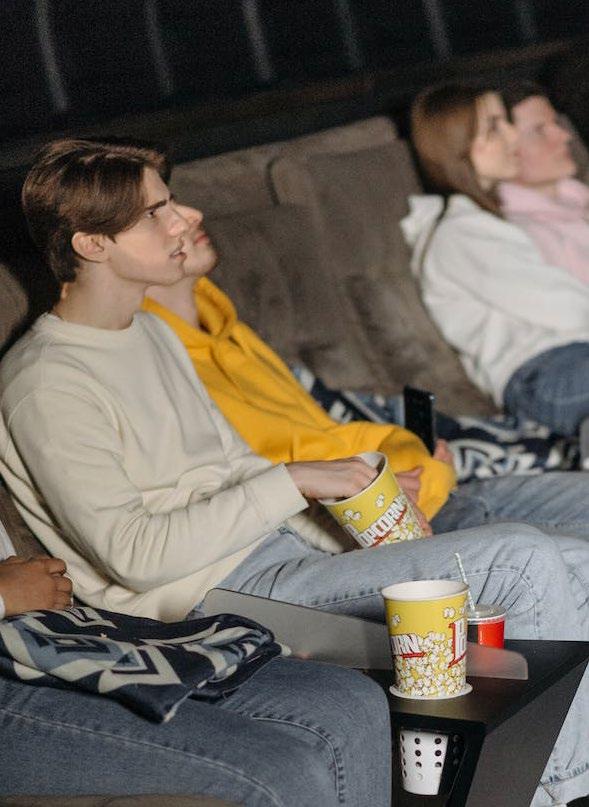
There have been so many more failed cinematic universes
than actual cinematic universes, because it just isn’t a viable idea. Both DC and Marvel have attempted to create cinematic universes before their current ones, and Stephen King’s Dark Tower universe, Warner’s King Arthur universe, and Hasbro’s attempt to make a G.I. Joe universe. Cinematic universes just aren’t sustainable.
Furthermore, cinematic universes are, by design, very long. A cinematic universe, if successful, will keep going as long as it is profitable, and having a never ending story, while enticing, isn’t good for your characters. Character arcs have rising and falling action, and then come to an end. The character’s arch has to come to an end. If their story keeps getting told there isn’t anywhere else to go, so the character becomes stale. Conversely, if they do decide to let a character’s arc end they still expect the universe to continue, and rely on what were supporting characters to do so. This is one of the reasons that phases four and five of the MCU have been bad, they’ve either continued characters’ stories past where they need to be which makes them feel hollow and empty (Thor, Hawkeye and Loki), or had them leave altogether, and the remainders have not been enough to hold it up (Shang-Chi and Antman).
Spring flowers and plants are great for your mental health

Brittany Cinderella Columnist
As the snow has finally melted, pops of color begin to sprout out of the grass. Spring is here. I’ve always thought I was a winter person until spring came around. My mom and I planted a ton of flower bulbs last year, so tulips, daffodils and peonies are beginning to show their colors. The absolute best part about my house are the eight lilac bushes that were in my backyard when I moved in. They make the entire yard smell sweet and fresh, whilst also adding a pop of purple to an otherwise green yard. Alongside the purple, we have a beautiful cherry blossom tree that drops petals all over to add dashes of pink. The idea of spring finally being here and going to the farmers market reminded me how much I loved flowers. Every time I go to Safeway, I will look for carnations to put in my monarch butterfly vase. Although they don’t last forever (unlike my succulent plants), I get a weird sense of relaxation from having bright and beautiful flowers that nature created. In a way, flowers have really helped my mental health lately.
A study done by the State University of New Jersey looked at how flowers might improve emotional health. According to an analysis done by the Society of American Florists site aboutflowers.com, those who received flowers felt less depressed, anxious and agitated when given flowers.

When I think about flowers, the first things that come to mind are gifts for others, celebrations and Mother’s Day. This past Mother’s Day, I got my mom African Violets from Ellensburg Floral, and was able to snag a succulent for myself. While flowers are full of colors, I have found
a lot of comfort in the “easy plants,” such as succulents and bamboo. With a succulent-themed kitchen, I find a lot of joy in putting succulents of many types in the window sill and bamboo plants in spots that can’t get as much light.
If you are looking for easy plants, I recommend bamboo plants. At most, you have to make sure there is water in the glass that’s holding it, and that it has some sort of support so it won’t fall over.
In Ellensburg, I’ve realized there are two natural colors we mostly see, green and white. In the winter and cold months, we see snow and gray skies with rain, but once spring and summer roll around, we see green grass, trees and plants. A study published in the Journal of Food Agriculture and Environment had 29 participants react to different colors of a leaf, measuring participants’ eye movements and brain activity.
“The dark green colored plants can be used to make a place more relaxing and calming... green-yellow and bright green colored plants can be used to make a place more pleasant, exciting and... can increase a sense of strength,” according to the team’s findings. Even red plants were found to have significance in creating a luxurious environment.
Whether you’re a plant enthusiast, have a green thumb or have no knowledge about plants, it’s worth getting started. The CWU Greenhouse and Vivarium has events every Friday from 1-3 p.m. where you can visit and pick up a free plant! Don’t want to commit? Fake plants count too! I had fake plants for a few years before committing to my first real plant. I encourage you to explore the world of plants, they might also improve your mental health.
BSERVED OPINION SECTION May 17, 2023 Page 09 @CWUObserver CWU Observer cwuobserver@gmail.com cwuobserver.com @CWUObserver
Purple lilacs, a pink tulip and light pink carnations in a glass vase against a floral tile backsplash.
Photo by Brittany Cinderella
Having a contiunity between films is a tactic to keep box offices full.
Photo courtesy of Pexels
Meet your Maintenance Worker Jared Nicolai
Hometown: Ellensburg, WA
Years working at CWU: 1.5
Favorite memory on campus: When I was a kid, my dad and my brother and I would ride our bicycles around campus and we would dumpster dive. We would jump in the garbage cans to find cans to recycle, and I remember when they used to have the fountain going over by Shaw Smyser and McConnell.

Favorite place or thing on campus: One of my favorite spots is just this big field in front of Dean Hall, this bridge right over here, sometimes I’ll go over there in the evening and just sit on the bridge and in the evening at certain times of year, you can see the bats flying under. You see a couple bats just flying along the water catching bugs.
Favorite way to spend a day off: Hiking in the woods with my dog or making music with my band, the Ellensburg Blusers. My dog is an English silver lab. She’s my soulmate.
Best piece of advice: I tell this to my friends all the time. Three rules to life: one, stay hydrated. Two, have fun. Three, refer back to rule number one, because you’re probably not drinking enough water.
Weirdest thing you’ve seen on the job: In high school, we played this game called fugitive, where the seniors are chasing the underclassmen and you have a destination point at night time, and you have to get from here to there without the seniors catching you. I remember my friend and I were sneaking along through the campus to get there, and we were just hunkered down in the shadows in the field over here, and the bridge was out of commission and there was a fence up, and we just see this wall of freshman hit the fence and try to climb over and escape these seniors.
Least favorite place on campus: Davies Hall, because that’s where we’ve had the most sewage explosions. Kind of traumatizing memories there a little bit.
Favorite part of the job: The connections that I make with all the people here.
What do you wish more students knew: The music building gets super busy and it gets trashed real quick, and I wish some of the students were more aware to pick up after themselves. It’s super helpful. I get it, though.
What’s on your bucket list: I really want to hike Mt. Stuart, because I go hiking all the time and I always see it, so it would be really cool to see the view from that vantage point.
Tips from the City of Ellensburg in case of flooding
Anna Fridell Staff Reporter
Flooding in Ellensburg was reported on May 2 for roughly a week due to a quick turnaround of warm temperatures and rapid snow melt from Naneum Canyon in Kittitas County, according to Public Information Officer for the City of Ellensburg Nicole Klauss.
“I think whenever there’s a flooding incident, we just have to come together and work together in the community and help your
neighbor out [and] work together to protect public infrastructure properties and people,” Klauss said.
The City of Ellensburg responds to events like these by providing three sandbag stations in the city for residents to take to their flooded areas, according to Klauss. These stations are located at Whippel Park in West Ellensburg, 7th Ave and Cascade St and Kiwanis Park.
Residents can find nearby sandbag station locations on The City of Ellensburg’s Facebook page.
“We offer free sand and free sandbags so residents can stop by on their own time to put the sand into the sandbags and take to their own property to protect their property in the event of a local flooding threat,” Klauss said.
Applying the sandbags to affected areas is the best way residents can prepare for flooding and extreme weather, according to Klauss.
Residents can stay updated through the city’s social media pages including Instagram, Facebook
and Twitter @cityofellensburg with updates and alerts, as well as keeping an eye out for flooded creeks when a crew is not on duty, according to Klauss.
“If it’s raining a lot and there’s something covering the storm drains, sometimes that can build up, so picking up after yourself and cleaning up debris from your own yard is helpful,” Klauss said.
The City of Ellensburg is hard at work to keep flooding to a minimum, according to Klauss.
“The city has crews cleaning
out culvert, cleaning out trash racks, kind of doing that on a regular basis,” Klauss said. “We have the street sweeper that clears the streets to try to prevent some of the debris from getting caught in the storm drain.”
The best way to navigate flooding situations in Ellensburg is to stay prepared, according to Klauss.
“I think it’s just always good to be prepared for really any kind of disaster,” Klauss said. “You never know what Mother Nature [is] going to throw at you.”
May 17, 2023 Page 10 @CWUObserver CWU Observer @CWUObserver cwuobserver@gmail.com cwuobserver.com
JaredNicolaiposesontheroofofDiscoveryHallduringhisbreak. Photo by Katherine Camarata
Complied by Katherine Camarata
Inside look: Women’s rugby forward Tessa Hann talks strategy, leadership, and growth
Charis Jones Staff Reporter
The CWU women’s rugby team recently concluded their season with an 11-7 overall record, and junior loose forward Tessa Hann had lots to reflect on in terms of their journey.
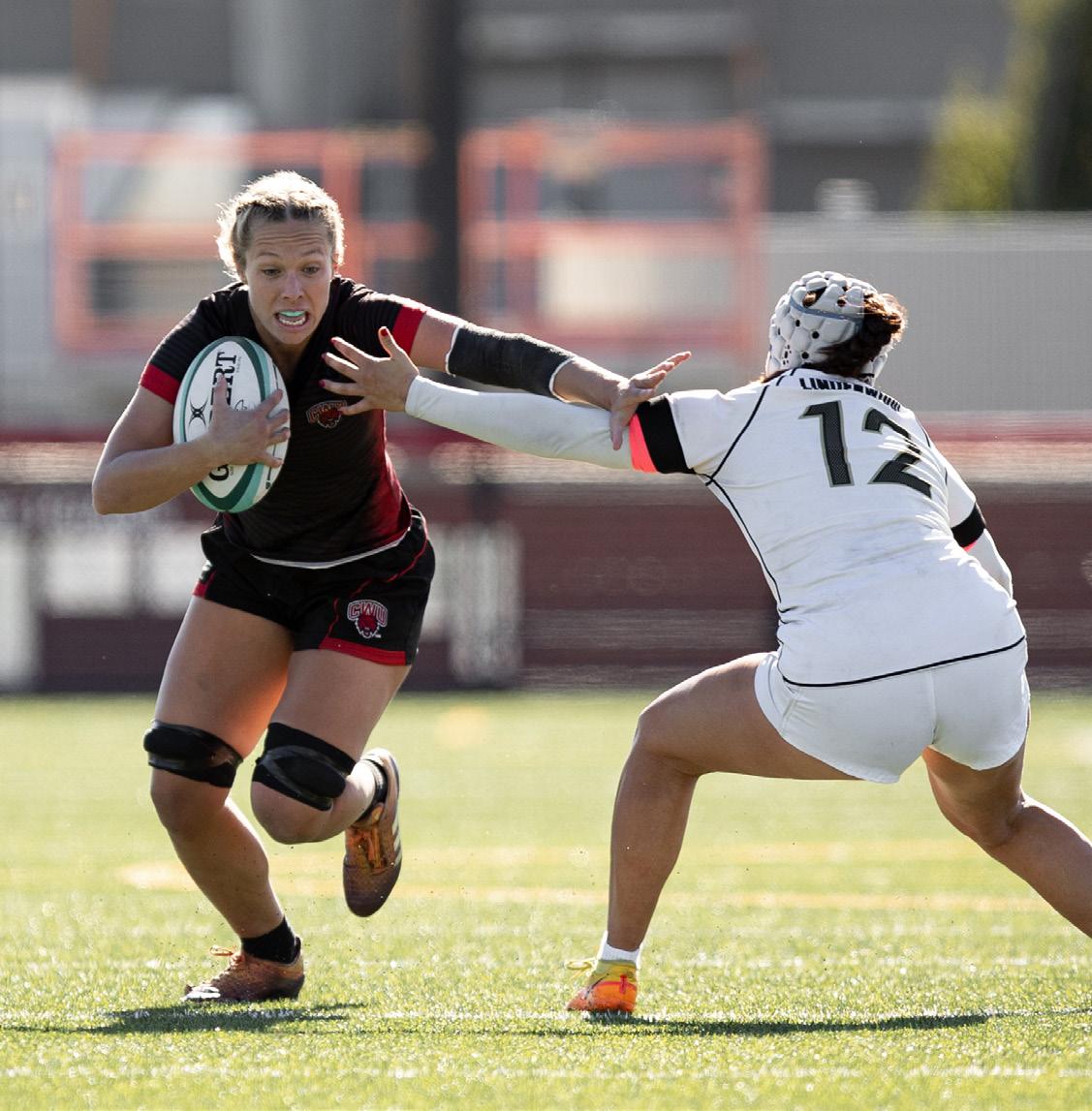
“I think our team has some growing to do, but overall we set a great foundation to keep building on for next season,” Hann said.
During the weekend of May 6, the team participated in The College Rugby Association of America (CRAA) USA Rugby College Women’s Premier 7’s National Championship held in Houston, Texas. Hann had several conversions during the 6-game series, and the team finished with a record of 3-3.
“Getting prepared for this tournament, we spent all off-season doing speed training,” Hann said. “We also had numerous scrimmages against each other and played in the Fool’s Gold tournament in Boise. These practices allowed us to work on team chemistry and fitness for the tournament.”
Hann noted that there are clear disparities between individual games and tournaments, stating, “Playing in a tournament is a lot busier, we have quick turn around and it’s a lot more demanding on your body.”
However, to combat this, Hann explained that the team employs
music to maintain high energy levels throughout the day.
“One strategy that my team has are warm-ups that we do before games that consist of music which helps us get excited to play next,” Hann said.
Hann also emphasized the importance of leadership and team chemistry, two key factors that have contributed to the team’s success throughout the season.
“Our team has many leaders which is awesome,” Hann said.
“Some that stick out are Rena [Tinoisamoa], Maddie [Hadden] and Mae [Sagapolu]. It’s important to have leadership on and off the field because that’s what keeps us going.”
In addition to the leadership, Hann also cites the team’s chemistry as a key to their success.
“Team chemistry has been very important this year on our team,” Hann said. “We are a very bonded team and with that, it allows us to know how one another plays and even act[s]. This makes playing and interacting off the field effortless.”
For players who are still trying to find their role on the team, Hann said that everyone’s contribution is valuable: “Winning doesn’t just come from a few players, it comes from everyone. Everyone on our team is important and valued. We all have to work together to build the culture and chemistry that will help us for the future.”
Looking ahead to next season, the team has set their sights on winning
Chandler and Albertin shine at outdoor championships
the national championship. Hann expressed confidence in the team’s ability to continue improving and building upon the foundation they have established this season.
“A goal for next season would be to win the national championship,” Hann said. “We’ve built such a great foundation, now all we need to do is sharpen up our skills and continue to improve.”
Tre’Jon Henderson Staff Reporter
CWU Track and Field competed in the outdoor Great Northwest Athletic Conference (GNAC) championships in Monmouth, OR. from May 12 to 13. Hurdler Lauryn Chandler brought home CWU’s lone first-place finish, becoming GNAC champion 100-meter hurdles champion with a time of 13.97 seconds.

Chandler finished as a top-qualifier the day before her competition, finishing with a time of 13.90 in the qualifiers which is 21st in the nation.
Head Track and Field Coach Kevin Adkisson spoke on how the team had been preparing for the tournament all year.
“They have been working for this moment since school started in September, and [in] the end this is what they have been building towards the whole time,” Head Track Coach Kevin Adkisson said. “The biggest hope is their health and that they are positively mentally prepared to display themselves.”
Adkisson hoped to see some of his athletes atop the podium when it was all said and done. Specifically, he wanted to see if his players could overcome each of their individual challenges throughout the season.
“It is going to be exciting to see if they can get on top of the podium, they have all had their own challenges [and] they worked through all season,” Adkisson said. “Each person has worked their tail off to
Sports Spectated
By: Isaac Hinson
The Trail Blazers have the third overall pick! They jumped up from their fifth best odds, and I’m just happy that they didn’t fall. The Pistons and the Rockets both fell, two teams who both had better odds in the lottery than Portland, and in that moment I felt like I was looking God in the eyes. Quite possibly one of the happiest ten second periods of my life.
Like I said, I’m happy with the third overall pick! There’s a lot of possibilities for Portland, and as long as they don’t generationally flounder in any moves they make, they should come out of the other end of this a much better team. They’re either going to get to draft a top three prospect in the draft this year, or they’re going to trade the pick for an All-Star/All-NBA level player. Which entails a massive roster upgrade either way, and a positive step in either the direction of future development, or the direction of immediate contention. Personally, I truly have no problems with whichever direction Portland decides to go. I’m just along for the ride at this point.
As the CWU women’s rugby team’s season comes to a close, it’s clear that their dedication to team chemistry, fitness and leadership has been integral to their success. With their sights set on a national championship, the team is committed to continuing their hard work, improving their skills and building upon their foundation as they prepare for future seasons.
get to this point, I am simply happy to be a part of the process.”
Coming into the tournament, Austin Albertin led the conference in the 400-meter hurdles with a time of 53.54 seconds. Johan Correa was looking for a title in the 800-meter dash, and his season-best time of 1:50.78 put him fourth in the conference.
Albertin came in second in the 400-meter hurdle, running a time of 53.05 seconds, a new Personal Record (PRPR (Personal record).
Albertin’s time is 42nd in the nation. Correa finished third in the 800-meter dash, clocking in at 1:51.44.
Albertin spoke before the meet about his position on the team as a leader, and how he steps up to make sure his teammates believe in themselves.
“We have all been working for this since July of last year, everyone has put their all into the process and worked their butts off,” Albertin said. “Me being a leader on the team, I just try and encourage my teammates to believe in themselves because they already put in the work.”
Albertin said the team’s work ethic and grittiness helped the team work through the year, citing specifically a harsh winter.
“I feel like nobody works harder than us, we were always battling through adversity, even through the tough winter where it was too cold to practice,” Albertin said. “We never complained, we just came together and worked through it.”
In terms of the other teams, the San Antonio Spurs ended up with the first overall pick, which means they got the rights to take Victor Wembanyama first overall. Wembanyama is immediately going to be the best player in San Antonio, and it’s going to be very exciting to watch him be unleashed from the get-go. This follows in a decades long trend of the Spurs landing elite big men in the draft, along with David Robinson in the 80s and Tim Duncan in the 90s. Charlotte has the second overall pick, which I think is the most complicated spot in the draft because they’re going to have to choose between guard Scoot Henderson and forward Brandon Miller at two. While Henderson is the clearcut better player in my opinion, his fit with LaMelo Ball might be weird. I also think that drafting for fit inside of a top three pick is extremely silly. If Charlotte feels the same way, I think they’ll end up with Henderson, leaving Portland (or whoever trades for our pick), with Miller.
Loss 8-5 May 11
Baseballat#2 NorthwestNazarene
May 11
Loss 5-4
Baseballat#1 WesternOregon
SPORTS @CWUObserver CWU Observer @CWUObserver cwuobserver@gmail.com cwuobserver.com May 17, 2023 Page 11
TessaHannstiffarmsheropponentduringamatchupagainstLindenwoodUniversity.
Photo by Jacob Thompson/Thompson Sports Media
LaurynChandleratseniornight. Photo by Jacob Thompson / Thompson Sports Media
Women’sRugbyat PennState
Win 27-0 May 7
Wildcat Words:

What’s your favorite way to de-stress?
Q&A Q&A
Cindy Bruns served as the training director for a doctor internship in 2009 before being hired in 2018 as the Director of Counseling. Her areas of professional interest include trauma, feminist and multicultural psychologies/therapies, spirituality and psychotherapy, and supervision and training. When she’s not working as a psychologist, she is a cook, teaches ballet and is a parent of a high-schooler.
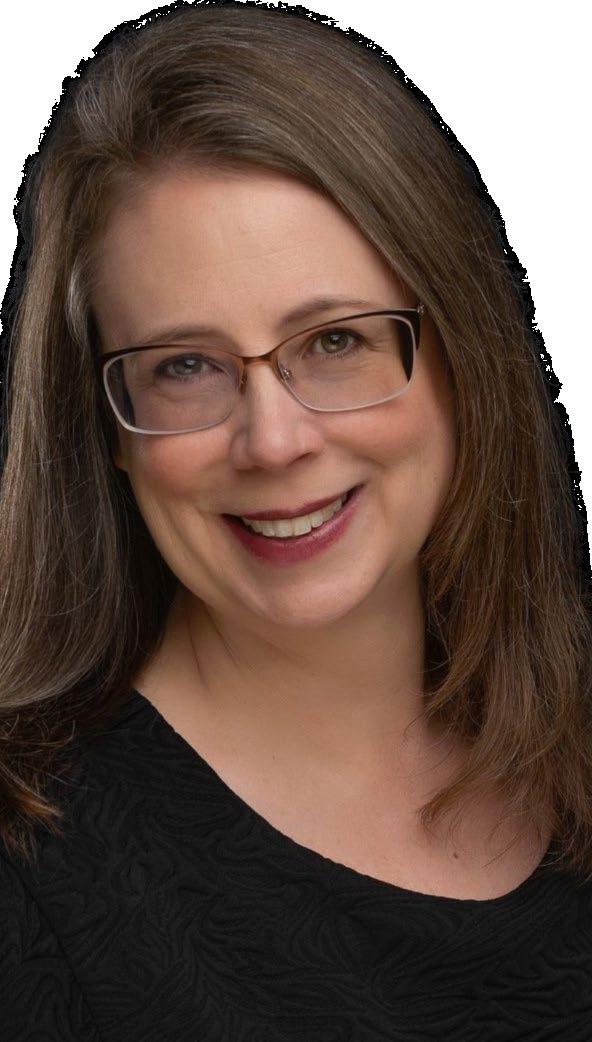


Cindy Bruns
What do you do to focus on your own mental health and wellness?
For me, I try to think of supporting my mental health in a variety of ways and I don’t have to do all of them all of the time but need to have at least three on a regular basis and make sure all areas are getting some attention at least several times a month. These areas are 1) basic needs–am I sleeping enough, moving my body in ways that make it feel good, eating foods that fuel me physically as well as emotionally, 2) time for self-reflection, 3) time with quality people in my life, 4) setting caring and compassionate boundaries with myself and with others, 5) engaging in meaningful activities, 6) doing things that are just fun, 7) reminding myself of my strengths and past successes, 8) challenging myself to try new, difficult or scary things and 9) intentionally remembering to be grateful for the small things in life, not just the big things.
What do you wish students knew about Counseling Services at CWU?
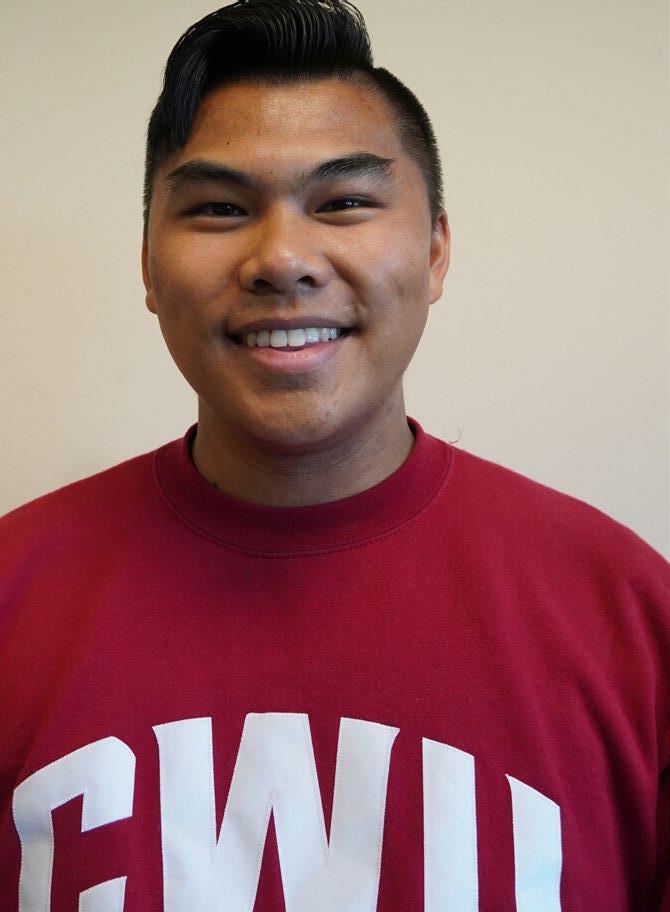
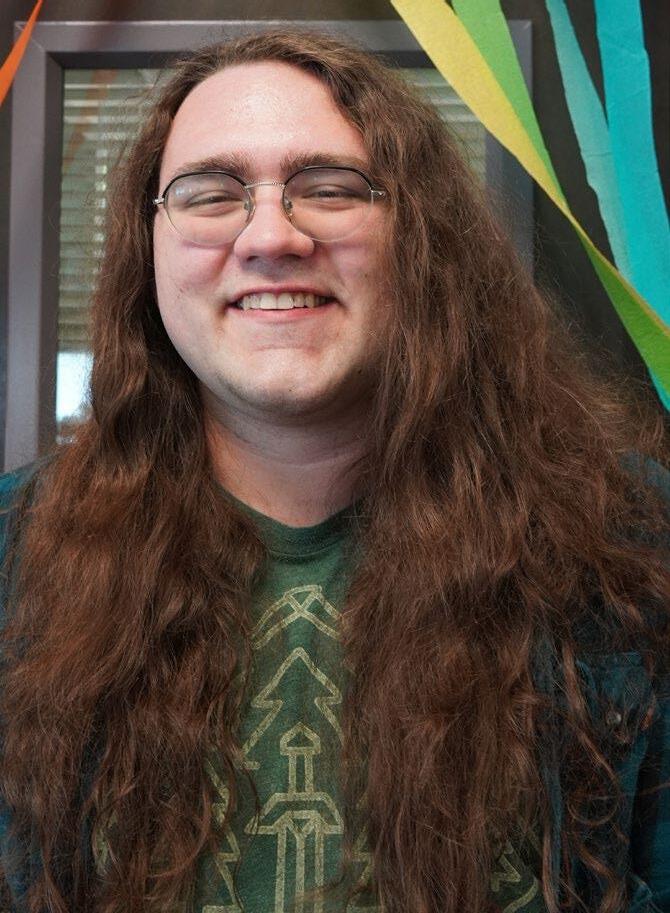
That we are a group of caring, committed professionals with diverse backgrounds and life experiences that want to help students move toward their values and what is meaningful in their lives. That we understand that mental health and struggles do not exist in a vacuum and that students’ identities, cultures and experiences are important to us and integral to our care. That individual therapy isn’t the only–or the best–option for treatment. That even if they hear there’s a wait list, we want them to make an appointment so we can provide support and make sure that students know about all their resources and options. We can be found in suite 22530 in Black Hall or by calling us at 509-963-1391. Finally, to know about our supplemental support for students through TimelyCare–virtual mental health care 24/7/365. They can access these services by downloading the TimelyCare app and registering with their CWU email address.
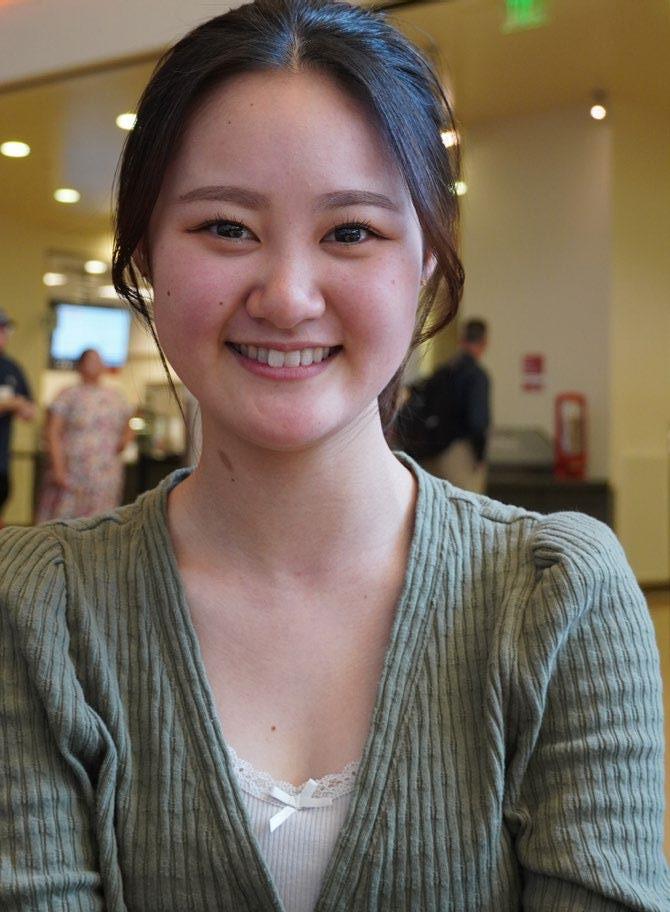
Do you have any recommendations on how students can focus on their mental health for Mental Health Awareness Month?


I would encourage students to make time for some self-reflection to check-in with themselves, how they are doing, what is present and what might be missing in their lives. Perhaps even sitting down and doing a journal exercise such as taking the prompt “For my mental health I need...” and then listing everything they can think of. I encourage students not just to list the “fun” or “nice” things like sleeping in or a special treat. Think about the more difficult things like having a hard conversation with someone that you’ve been putting off or setting a boundary with yourself because you know it will make you feel better in the long run, even if it isn’t fun right now. Then look at the list and see what is already in place or easily within reach. Celebrate those! Then look at what might take some planning and some work, decide on what seems easiest to work toward and who can support you toward this goal and take a first step.
love to play War Thunder, definitely Minecraft and
19 FRI 20 SAT 21 SUN 22 MON 24 WED 23 TUES WeeklyEvents 18 THURS Emily Linden Jr. Elementary Education “Sometimes I take a nap, but sometimes I go on TikTok or I just pet my cat, Archie.” May 17, 2023 EVENTS Page 12 @CWUObserver CWU Observer @CWUObserver cwuobserver@gmail.com cwuobserver.com “I like to go to the café and order a sweetened coffee to relax. I also like listening to music such as Ed Sheeran or Conan Gray.”
“I love a good rice and chicken meal. It’s simple, easy to make, and always tasty.” Submit a letter to the editor or a guest column on our website!
Mason Saulsbury Jr. Film Production
compiled by Brittany Cinderella Wildcat Words by
Lilly
“Go buy a plant from the Botany Shop. The kind I like is the Venus Flytrap.”
Q&A
Yohanes Goodell
Hammond Jr. Environmental Science
2:30 - 3:30 p.m. - ASCWU Public Meeting in SURC 235 6 - 8:30 p.m. - LGBTQ+ Film Festival “Margarita with a Straw” in Samuelson 104 7 - 9 p.m. - Open Mic Night in The Bistro National SomethingPlant Day 3 - 4 p.m.
4:30
Noon - 2
Food
Rotunda National Flower Day
- ASCWU Public Meeting in SURC Pit
and 7:30 p.m. - Monday Movie Madness: “Creed III” in SURC Theater (Students Only, Bring ID)
p.m. - Second Harvest Mobile
Pantry in McIntyre Hall
National Eat More Fruits and Vegetables Day
Jo Burke Jr. Public Policy
Mana Kawanichi Fr. Multicultural Communications “For me, video games. I
Roblox!”
Sustainability Cafe:
Plan
137A/B
3 - 4:30 p.m. -
Climate Change Action
in SURC
See “National shortage of therapists affecting CWU’s Student Counseling Center staffing” online *SeeFullQ&AOnline*





 Jampa Dorje Guest Columnist
Jampa Dorje Guest Columnist





 Zileni Milupi Assistant Scene Editor
Zileni Milupi Assistant Scene Editor
























